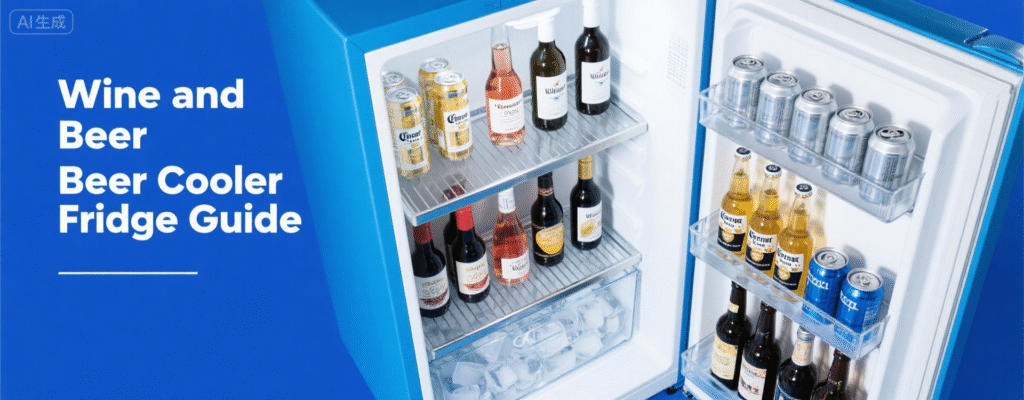For the discerning enthusiast, proper beverage storage is paramount. This article explores the specialized world of wine and beer cooler fridge units, explaining why a standard kitchen refrigerator falls short. We will delve into the critical differences between the ideal environments for wine and beer, guiding you toward the perfect cooling solution for your collection.
The Science of Optimal Preservation
Both wine and beer are delicate beverages whose flavors can be easily compromised by improper storage. The three main enemies are incorrect temperature, light exposure, and vibration. A standard refrigerator is typically too cold for most wines, which can dull their aromas and flavors, and its compressor causes vibrations that can disturb the sediment in wine and agitate beer. A dedicated wine and beer cooler fridge is engineered to combat these issues. For instance, these units maintain a consistent, higher temperature range (typically 45-65°F for wine, 35-55°F for beer) and often use thermoelectric cooling, which is vibration-free. The importance of dark, UV-protected glass doors was highlighted in a 2017 study from the Journal of Agricultural and Food Chemistry, which confirmed that light exposure is a primary cause of “lightstrike,” a chemical reaction that spoils beer and wine.
Choosing Your Perfect Cooler
Understanding the distinct needs of your beverages is the first step in selecting a unit. The key is humidity control and temperature zoning.
- For a Wine-Dominant Collection: Wine requires a relatively humid environment (around 50-70%) to prevent corks from drying out. Look for a cooler with wooden or coated metal racks to cradle bottles properly. If you collect both reds and whites, a dual-zone cooler is essential, allowing you to store each at their ideal serving temperature simultaneously.
- For a Beer-Focused Collection: While many craft beers now benefit from wine cooler-like conditions, most beers are best served colder and are less sensitive to humidity. A single-zone cooler set between 38-45°F is often perfect. Consider a unit with adjustable shelving to accommodate cans, large-format bottles, and growlers.
- For a Mixed Collection: A dual-zone or convertible unit is your best bet. This allows you to create a warmer, humid zone for wines and a cooler, less humid zone for beers, all within one elegant cabinet.
In summary, investing in a specialized cooling appliance is a critical step for preserving the quality and taste of your prized beverages. By understanding the science behind temperature, humidity, and vibration, you can select a wine and beer cooler fridge that perfectly suits your collection. Whether you are a casual enthusiast or a serious collector, the right cooler ensures every bottle and can is served exactly as intended, transforming your home bar into a haven for perfectly preserved drinks.
